Editor's note: This is part two in our From Field to Fork feature. Check out part one (farming) by clicking here.
For centuries, humans have relied on foraging to find sustenance from the natural world. But now, several pioneering chefs and caterers have rediscovered the beauty of foraged ingredients. These intrepid culinary explorers venture into forests, meadows, and coastal regions in search of wild mushrooms, herbs, berries, and edible flowers.
“I feel like foraged ingredients offer an exciting opportunity for caterers to offer truly unique menu options that appeal to both foodies and health-conscious customers,” says Mike Kempenich with Gentleman Forager (Minneapolis). “Foraged ingredients are an exciting addition to any dish or menu, often because of the exotic nature—they’re simply less well known and less widely used—but also because their flavors are often more intense than a conventional counterpart. We all have lots of items growing in our yards and on our property that are overlooked.”
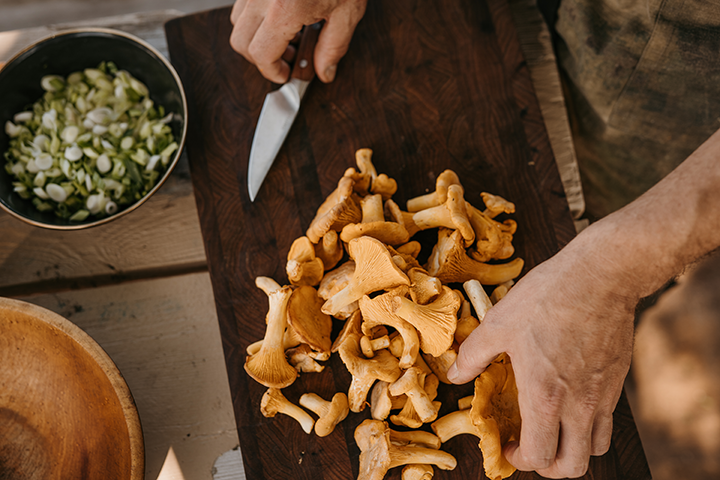
Chef Alan Bergo is one of America’s leading culinary authorities on mushroom hunting and foraging. A veteran of the restaurant industry, he spent nearly two decades as a professional chef specializing in local and wild foods in restaurants throughout St. Paul and Minneapolis, MN. He’s best known for his blogs, recipes, and photography. In 2022, Bergo was the James Beard Foundation Award Winner for Instructional Visual Media for his work on The Wild Harvest with Alan Bergo. Photo courtesy Alan Bergo
By integrating these unique elements into their menus, these chefs are able to infuse dishes with a taste of the surrounding landscapes, creating a truly immersive dining experience.
“As a chef, foraging gives me access to the most incredible ingredients imaginable. Things no other chef will get to work with unless they harvest it themselves,” says James Beard winning Chef Alan Bergo (Forager Chef), who lives in Western Wisconsin. “It’s exciting and fun to find free food. Foraging basically turns nature into a giant edible scavenger hunt.”
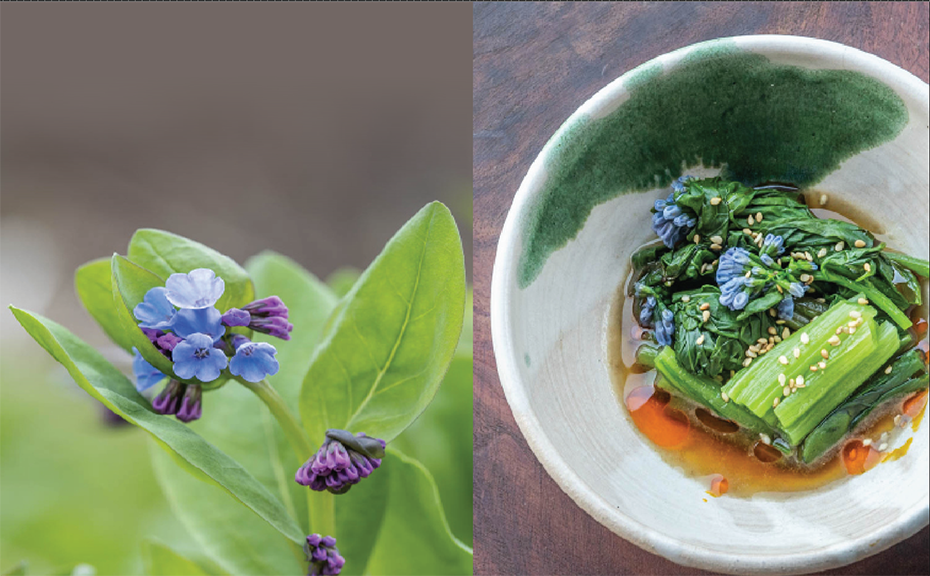
Virginia Bluebells are ephermerals that are described as having “a unique, green flavor” or a flavor that is “mushroomy” or “aquatic.” Right: Japanese-inspired Virginia Bluebell greens served with a mushroom broth (topped with sesame seeds and finishing oil) makes a light, refreshing, and interesting appetizer. Photos courtesy Chef Alan Bergo
Virginia Bluebells with Mushroom Broth
Ingredients
4 oz fresh Virginia Bluebell greens and unopened flowersKosher salt and fresh ground black pepperCold-pressed acorn oil, to taste, or another finishing oil like Smudes sunflower, or sesame½ cup wild mushroom brothToasted sesame seeds, to garnish, optionalMethod
- Bring a pot of salted water to a boil and blanch the Virginia bluebell greens for a few moments, or until just tender and they taste good to you. Remove to a bowl of cold water, then remove to a towel, pat dry and reserve.
- Heat the mushroom broth and reduce until strong and concentrated, about ¾ to half a cup. Season the broth with soy sauce and a dash of maple syrup to taste and keep warm, it should be strong and well-seasoned.
Ingredients for Mushroom Broth
1 oz dried mushrooms (roughly 2 handfuls), preferably a blend you’ve dried1 ea. small white onion1 ea. rib celery1 ea. small carrot1 ea. clove garlic, crushedThin slice of gingerSmall sprig of fresh thymeWater, to coverSmall handful of bonito flakesDash of maple syrupMethod
Coarsley chop the carrot, onion and celery. Combine in a small pan with the mushrooms, bonito flakes, ginger, thyme, garlic, and water to cover. Bring the mixture to a simmer, cover and cook for 45 minutes on the lowest heat, strain, cool, and transfer to a small pot like a butter warmer.
To Serve
- Cut the bluebell stems into 2 inch pieces and leave the greens whole. In each of two, small, shallow serving dishes, arrange a small pile of bluebell stems. Put the greens next to the stems, arranging some of the unopened flowers on top.
- Drizzle over 2 tablespoons of the reduced mushroom broth, garnish with the oil and sesame if using and serve at room temperature with chopsticks. Encourage guests to drink the broth at the end.
Common ingredients that can be foraged range from mushrooms (e.g., morels, chanterelles, black trumpets, and porcinis) to plants (e.g., nettles, amaranth, wild mustard greens, and watercress), nuts and starches (e.g., black walnuts, cattail shoots, pine pollen, and parsnip roots), herbs and alliums (e.g., ramps, wild caraway, and spruce tips), and fruits (e.g., gooseberries, crabapples, wild plums, and aronia berries).
“Basically, if it’s delicious and grows wild, we probably can get it for a client,” says Kempenich.
So, what does foraging look like from forest to fork from the perspective of a chef? Let’s take a look at Kempenich’s experience foraging for morel mushrooms (which are most common in the spring).
“Morels come about the same time as ramps, a wild leek with the flavor of both onion and garlic. Next to the ramps, you can often find fiddleheads also, the unfurled leaf of an ostrich fern–it has a delicious asparagus-like flavor,” he explains. “I can utilize the morels either as a main dish, perhaps with some shallot and thyme, or as an hors d’oeuvre, with some melted goat cheese added to make a crostini. The fiddleheads can be sauteed after blanching and caramelized—they make a perfect side with only salt and pepper. I will sometimes use bacon drippings as my fat when I sauté them for an added layer of flavor. The ramps can be utilized as you would onion and garlic. They can make for a great addition in a salad, added to the fiddleheads, or added to the morels. I might even make compound butter with them and make some great bread to use it on.
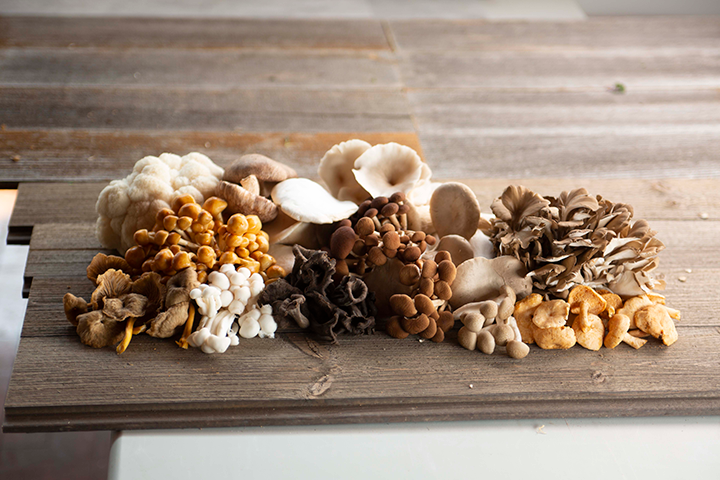
Gentleman Forager is a company dedicated to exploring the world of foraging and wild foods, founded by Mike Kempenich, an experienced foraging and wild foods expert. Gentleman Forager offers a range of services, including foraging classes, wild food products, outdoor events, catering, and wild-themed dinners. The outdoor events and dinners provide a unique opportunity to learn more about foraging and wild foods while enjoying delicious meals made with ingredients gathered by Kempenich himself. Photo courtesy Mike Kempenich/Gentleman Forager
“As you can see, there are plenty of ways to make what your forage versatile and incorporate them into recognizable dishes done differently,” he adds. “I’ve found that most people love to try new things if they recognize the dish to some degree, more than they are willing to try something completely out of their wheelhouse that they have never heard of.”
Beyond the kitchen, foraged ingredients have also proven to be flavorful additions to cocktails.
“Think of evergreen needles or flower buds or birch bark—not so pleasant to chew on, but a strong flavor that can easily be infused into liquid and layered with other tastes in a beverage,” says Kempenich.
Bergo has even worked with a distillery to create a line of foraged liquors.
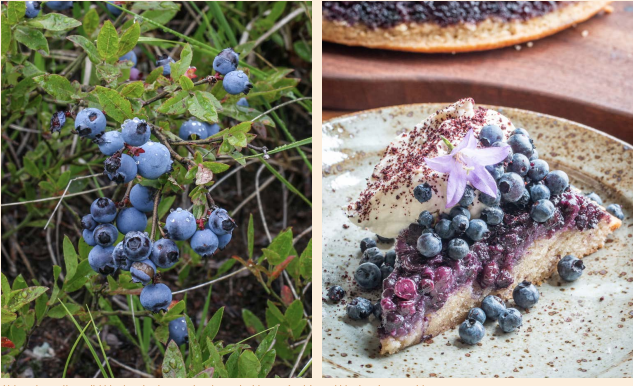
Although smaller, wild blueberries have twice the antioxidants of cultivated blueberries, provide more fiber, and are superior in flavor. Right: Wild Blueberry Upside-Down Cake made with hazelnut meal, finished with a spoonful of meadowsweet infused cream. Photos courtesy Alan Bergo
Wild Blueberry-Hazelnut Meal Upside-Down Cake
Ingredients for Wild Blueberries
2 cups wild blueberries at room temperature4 T maple sugar2 T butterIngredients for Cake
¾ cup hazelnut meal¾ cup flour⅛ tsp cinnamon¼ tsp ground ginger2 ea. large eggs½ cup hazelnut oil, grapeseed oil, or any other cooking oil1 tsp vanilla1 tsp baking powder½ tsp salt¼ cup crème fraiche or sour creamMethod for lining the cake pan
Heat the maple sugar, butter and a pinch of salt until melted and pour into the bottom of a buttered 9 inch pie pan or similar. Add the wild blueberries and shake the pan to help them settle into a relatively smooth layer.
Method for the cake batter
Method for baking
Bake 350 F for 30-35 minutes or until just set and a toothpick inserted in the center comes out clean.
To Serve
If interested in starting to forage, caterers and chefs must do a bit of research upfront to ensure that they are not only foraging edible ingredients (and not poisonous), but they also have to be aware of the laws regulating foraging (which can only be done on private land, not public). “Foraging is a learned skill and comes with a learning curve. You need to educate yourself before you serve food you harvest to the general public since mistakes are not an option,” says Bergo.
The Association of Foragers is a good place to start for engaging an expert, with an online directory of professional foragers, all of whom have signed a code of conduct to promote sustainable, safe, and mindful foraging. Gentleman Forager also offers educational foraging walks and presentations.
“Once you know the flavor profile of a wild ingredient it is fun to develop a recipe around it by combining old and new concepts and ingredients,” says Kempenich.
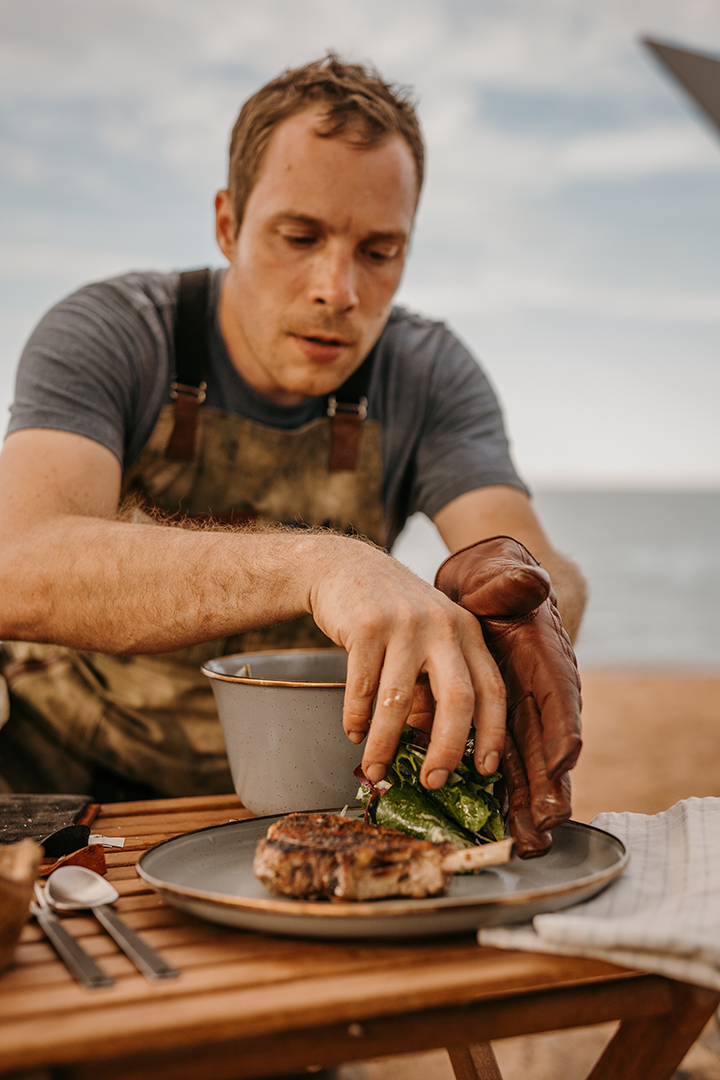
Alan Bergo says that foraging has “awoken dormant instincts” in him since it allows him to have a much better understanding of the local seasons, and how wild food can be incorporated with cultivated foods. He also believes that it’s very rewarding to harvest his own food because it helps him “feel more connected to it, and from there, proud of it.” Photo courtesy Alan Bergo
By starting to forage their own ingredients, chefs have the opportunity to innovate their menus and present something truly unique. While it may be difficult to include foraged ingredients in everything on the menu (depending on the season and the availability), it does offer opportunities for customization, upsells, and specialized menus.
“Foraging has changed the way that I cook,” says Bergo. “I’m trying to show off the ingredients that I harvest, so my food is lighter now, fresher, and less reliant on traditional starch-meat-veg combos. Foraging makes your food ingredient-focused, less reliant or sensitive to trends, and, for me, more minimalist. All I want to do now is find the greatest ingredients possible and do as little to them as I can. You will have incredible ingredients on your menus people won’t see anywhere else, which gives a great competitive advantage and allows you to increase per-plate charges. Guests will appreciate the novelty and flavor, and your food coast will thank you.”

Lateral cattail rhizomes are crisp, refreshing, and faintly sweet, with a subtle resemblance to cucumber. Right: Cattail Rhizome Salad with smoked trout and tarragon. Photos courtesy Alan Bergo
Cattail Rhizome Salad with Smoked Trout
Ingredients
4 oz cattail rhizomes3 oz smoked trout1 oz radish1 oz scallion, thinly sliced1 T chopped fresh tarragonFresh lemon zest and juice, to tasteKosher salt and fresh ground black pepper1-2 oz Purslane or chickweed tips (a handful to taste)Fresh cut chives, to taste¼ cup salad oil such as extra virgin olive oil or Sam Thayer’s Hickory NutMethod
Additionally, knowledge is power, and for a chef that is something to be valued.
“For chefs and caterers, I think it’s especially helpful to be able to discuss the unique products, at least to some degree, first-hand,” Kempenich says. “It lends credibility to their menu and to their skills as a professional that really looks for the best.”
Check back next week for part three of From Field to Fork where we'll look at beekeeping.



